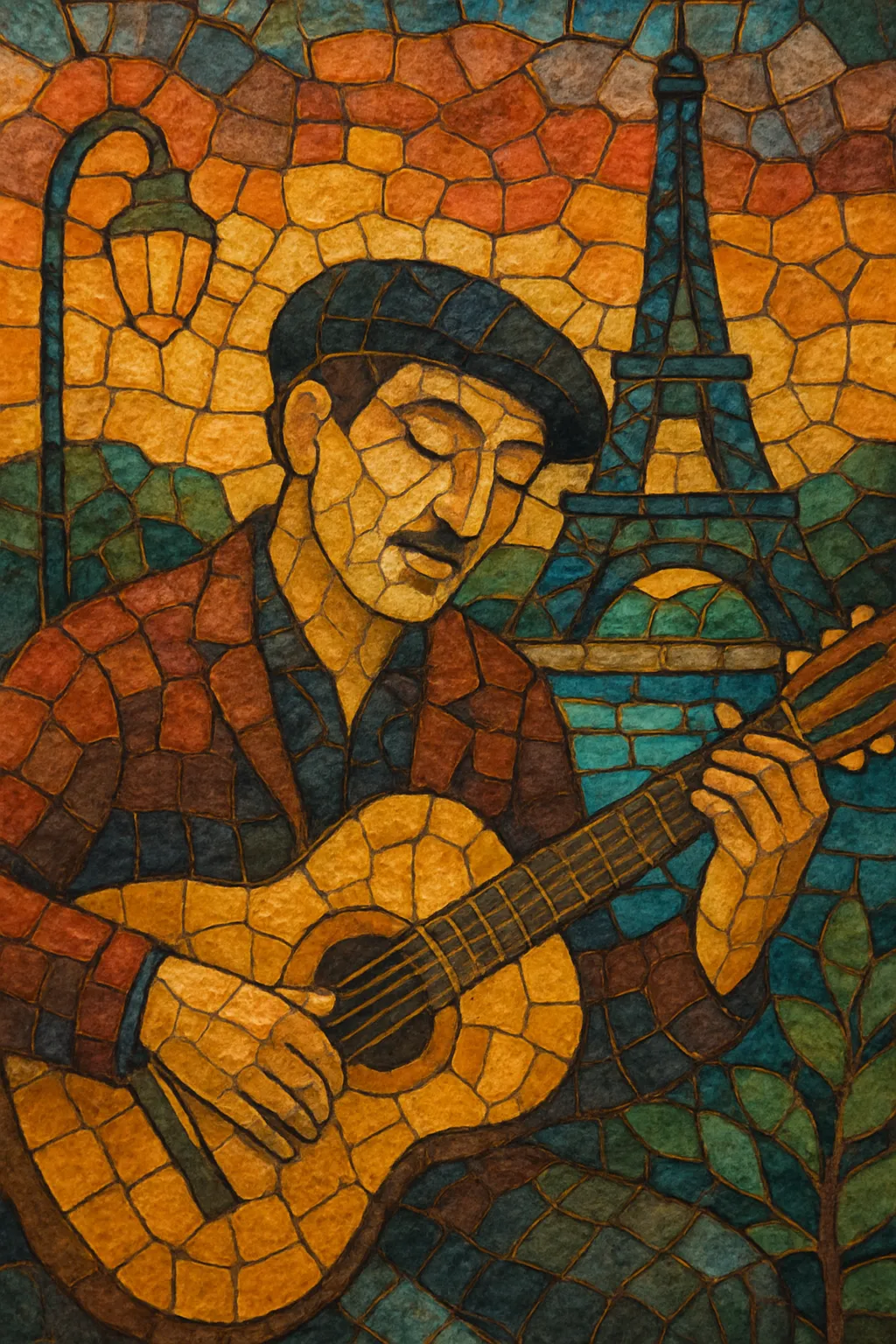Chanson française is a lyric-centered French song tradition in which the expressiveness, prosody, and storytelling of the French language take priority over virtuosic vocal display. Melodies tend to be memorable yet restrained, arranged to support the text rather than overshadow it.
Historically linked to Parisian cabarets, music halls, and the café-concert circuit, the style embraces topics ranging from love and everyday life to social satire and political commentary. Typical accompaniments include guitar, accordion, piano, and small orchestras, with arrangements that can range from intimate to lush. Performance is as much about interpretation and diction as it is about singing, often favoring conversational phrasing and dramatic nuance.
Chanson française emerges from a convergence of French cabaret and café-concert culture, music hall traditions, and the lyric sensibility of poetry. It inherits dramatic delivery and urban realism from chanson réaliste, while the waltz-inflected swing of musette and Parisian popular dance idioms shape its accompaniment. By the 1930s, figures like Charles Trenet synthesize jazz-influenced phrasing and modern orchestration with distinctly French storytelling, setting the template for the genre.
After World War II, chanson becomes a dominant force in Francophone music. Édith Piaf embodies the emotive, street-level intensity of the style; Georges Brassens, Jacques Brel, and Léo Ferré elevate the literary ambition of lyrics, marrying wit, metaphor, and social reflection with economical yet potent accompaniment. Juliette Gréco and the Saint‑Germain‑des‑Prés scene connect chanson to existentialism and postwar intellectual life, while Charles Aznavour and Yves Montand help globalize the genre through film and international touring.
Chanson’s core values—text clarity, narrative focus, and interpretive delivery—permeate French pop and rock. Artists incorporate orchestrations inspired by baroque pop and chamber textures, while others adopt contemporary production without sacrificing the centrality of lyrics. The tradition spreads across the Francophone world, notably informing chanson québécoise, and its DNA can be heard in singer‑songwriter movements that prioritize personal voice and crafted narratives.
Modern artists continue to draw on chanson’s emphasis on text and delivery, integrating elements from indie, electronic, and jazz while preserving the primacy of storytelling and the musicality of French prosody. Chanson remains a touchstone for French-language songwriting and a benchmark for lyrical sophistication.
Start with the text. Write lyrics that carry clear images, narrative arc, and nuanced emotional shades. Prioritize the natural rhythm and vowel colors of French; let prosody guide melodic contour and phrasing.
Use diatonic progressions with tasteful chromatic color (secondary dominants, borrowed chords, occasional modal inflections). Keep melodies singable and speech-like, with contour shaped by the meaning and accentuation of words rather than by large leaps.
Favors moderate tempos. Common meters include 3/4 and 4/4; waltz feels (influenced by musette) are frequent, as are gently swinging grooves borrowed from jazz. Rhythmic subtlety—rubato and elastic phrasing—supports interpretation.
Core instruments: voice, guitar, piano, and accordion. Augment with double bass, light percussion (brushes), strings, woodwinds, or small orchestra for color. Orchestration should frame the text; avoid overpowering the vocal line.
Enunciate clearly; diction and storytelling are paramount. Use dynamic shading, rubato, and timbral variation to convey character and emotion. Think like an actor: embody the song’s persona.
Simple strophic or verse–refrain forms work well. Introduce subtle arrangement changes (register shifts, countermelodies, harmonic color) to mark narrative development. Instrumental interludes should reference or foreshadow lyrical ideas rather than showcase virtuosity.
Keep the vocal forward in the mix. Use warm, intimate acoustics or light orchestration to evoke cabaret/music‑hall intimacy. Modern elements (subtle electronics, indie textures) can be included if they preserve textual clarity and interpretive space.


